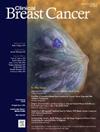Evaluating the Association between Body Mass Indices and the 21-Gene Recurrence Score: A Systematic Review and Network Meta-Analysis
IF 2.5
3区 医学
Q2 ONCOLOGY
引用次数: 0
Abstract
Background
Preconceptions exist regarding the association between obesity and the propensity to develop estrogen receptor positive (ER+) cancer. There is limited data assessing the impact of body mass index (BMI) on 21-gene recurrence score (RS) results.
Aim
To perform a systematic review and network meta-analysis to assess whether increased BMI is associated with low RS in estrogen receptor positive (ER+) breast cancer.
Methods
A systematic review was performed as per PRISMA guidelines. Descriptive statistics were used as appropriate. Meta-analyses were performed using the Review Manager v5.4 and NMA performed using shiny.
Results
6 studies with 3523 patients were included. The mean age was 61 years and mean RS was 16.6 and BMI was 25.8. When applying traditional RS cut-offs 66.4% of patients had a RS < 18 (3529 out of 5312), 27.6% had RS 18-30 (1466 out of 5412) and 6.0% had a RS of > 30 (317 out of 5312). At meta-analysis, patients with RS 18-30 (risk ratio (RR): 1.15, 95% confidence interval (CI), 0.91-1.46) and RS > 30 (RR: 1.03 95% CI, 0.79-1.35) were not associated with lower BMI. When applying TAILORx cut-offs, 24.2% of patients had a RS < 11 (996 out of 4124), 63.1% had a RS 11-25 (2604 out of 4124) and 12.7% had a RS > 25 (524 out of 4124). At meta-analysis, patients with RS 11-25 (RR: 1.57, 95% CI, 0.77-3.75) and RS > 25 (RR: 1.58, 95% CI, 0.71-3.77) were also not associated with lower BMI.
Conclusion
This study failed to identify a significant association between BMI and RS group.
评估体重指数与21个基因复发评分之间的关系:系统评价和网络荟萃分析。
背景:关于肥胖与雌激素受体阳性(ER+)癌症倾向之间的关系存在先入为主的观念。评估体重指数(BMI)对21基因复发评分(RS)结果影响的数据有限。目的:通过系统回顾和网络荟萃分析来评估雌激素受体阳性(ER+)乳腺癌中BMI升高是否与低RS相关。方法:按照PRISMA指南进行系统评价。酌情使用描述性统计。使用Review Manager v5.4执行meta分析,使用shiny执行NMA。结果:纳入6项研究,共3523例患者。平均年龄61岁,平均RS为16.6,BMI为25.8。当应用传统RS截止值时,66.4%的患者RS < 18(5312例中有3529例),27.6%的患者RS 18-30(5412例中有1466例),6.0%的患者RS为bb30(5312例中有317例)。在荟萃分析中,RS 18-30(风险比(RR): 1.15, 95%可信区间(CI): 0.91-1.46)和RS bbb30 (RR: 1.03 95% CI, 0.79-1.35)的患者与较低的BMI无关。当使用TAILORx截止值时,24.2%的患者RS < 11(4124例中有996例),63.1%的患者RS 11-25(4124例中有2604例),12.7%的患者RS bb -25(4124例中有524例)。在荟萃分析中,RS 11-25 (RR: 1.57, 95% CI, 0.77-3.75)和RS bbb25 (RR: 1.58, 95% CI, 0.71-3.77)的患者也与较低的BMI无关。结论:本研究未能确定BMI与RS组之间的显著相关性。
本文章由计算机程序翻译,如有差异,请以英文原文为准。
求助全文
约1分钟内获得全文
求助全文
来源期刊

Clinical breast cancer
医学-肿瘤学
CiteScore
5.40
自引率
3.20%
发文量
174
审稿时长
48 days
期刊介绍:
Clinical Breast Cancer is a peer-reviewed bimonthly journal that publishes original articles describing various aspects of clinical and translational research of breast cancer. Clinical Breast Cancer is devoted to articles on detection, diagnosis, prevention, and treatment of breast cancer. The main emphasis is on recent scientific developments in all areas related to breast cancer. Specific areas of interest include clinical research reports from various therapeutic modalities, cancer genetics, drug sensitivity and resistance, novel imaging, tumor genomics, biomarkers, and chemoprevention strategies.
 求助内容:
求助内容: 应助结果提醒方式:
应助结果提醒方式:


